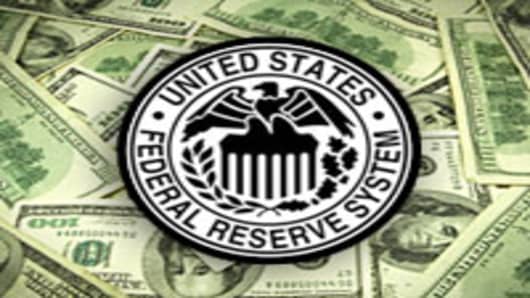After you crunch the Primary Dealer Credit Facility (PDCF) numbers, you can see through the noise. What is revealed is this: The Fed's overnight lending to primary dealers concentrated staggering sums of government cash in the hands of a tiny circle of financial institutions. The story of PDCF lending is the story of those few financial institutions that went on to become just six banks.
Over the lifecycle of the PDCF program, The Federal Reserve lent a total of about $8.95 trillion to primary dealers of government securities. (This group is already a very small club: Currently, the New York Fed lists a total of 18 institutions authorized to perform this function.)
But the concentration of the vast majority of PDFC funds was far narrower than that. Institutions that ultimately went on to become just six banks—Bank of America, Citigroup, Morgan Stanley, Barclays, Goldman Sachs, and JPMorgan—received at total of about $8.78 trillion through the PDFC program.
That $8.78 trillion figure represents over 98 percent of the funds lent by the PDFC program.
While the numbers are dizzying, there are two important qualifications.
First, PDFC lending totals represent the aggregate amount of overnight borrowing by the banks —not the amounts outstanding at any one time.
(For more information on that topic, see my piece posted yesterday.)
Second, it's important to note that my analysis rolls up the overnight borrowing by Lehman Brothers under Barclays—and both Countrywide Financial and Merrill Lynch under Bank of America.
Since PDCF loans were lent on overnight terms, it might seem reasonable to suspect that once a bank was acquired it borrowed under the name of its new parent.
That, in fact, appears to be exactly what happened in the case of Lehman Brothers. On September 17th, Lehman's "core assets" were sold to Barclays. And, also on September 17th, the Federal Reserve records it last PDFC loan to an institution borrowing under the name "Lehman Brothers Inc."
But precisely how the Fed was lending—and to which entity—is not at all clear in other cases. For example, The Fed continued to lend to Bear as "Bear, Stearns & Co., Inc." until June 23, 2008—although JPMorgan formally completed its takeover of Bear Stearns on Saturday, May 31 2008. In fact, after JPMorgan completed its takeover of Bear Stearns, the Fed lent Bear a little over $100 billion, during a period of about three weeks in June. Likewise, Merrill Lynch borrowed three times that from the Fed—a little over $300 billion—between the date on which their acquisition by Bank of America closed, January 1, 2009, and the date on which the Fed data records Merrill's final PDCF loan, on March 27, 2009.
Also unclear is what role the acquiring banks played in the firms they were taking over during the time between when the deals were announced and the time when the deals were completed. If the Fed allowed the acquiring bank to play a substantial role in the acquired, the influence held by management at the six banks discussed earlier in this article would likely have been both longer and greater.
As the data gets crunched all over the world—and the behind-the-scenes story begins to leak out—the picture will likely become clearer.
But the story that has begun to emerge already paints a fascinating picture of very few people involved in making very large decisions—with tremendous sums of government money.
_______________________________________________
Companies mentioned in this post
Bank of America
Citigroup
Goldman Sachs
Morgan Stanley
JPMorgan
Barclays
____________________________________________________
Questions? Comments? Email us atNetNet@cnbc.com
Follow NetNet on Twitter @ twitter.com/CNBCnetnet
Facebook us @ www.facebook.com/NetNetCNBC


